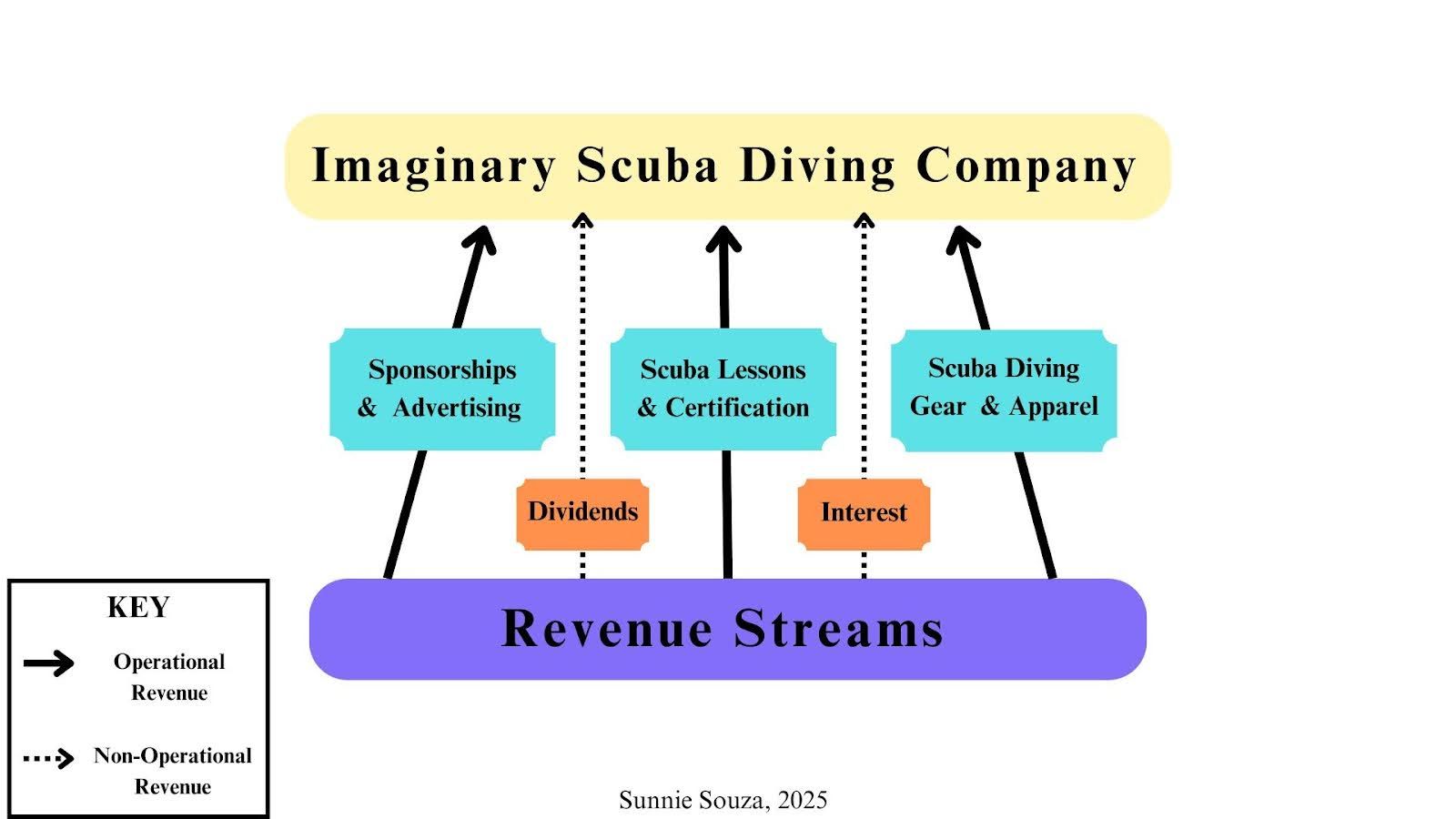What is a Revenue Stream?
According to the Corporate Finance Institute (CFI,) “revenue streams are the various sources from which a business earns money from the sale of goods or the provision of services.” Revenue streams are necessary for a company to produce profit and maintain a healthy, growing business. A company may have one source of revenue, or several, which Pavlenko explains increases its stability “especially when the market, customer preferences, and economic conditions are changing.” A company may mobilize different types of revenue streams to best suit their needs and business model. We will discuss the main types of revenue streams and how they are used to generate income below.

Types of Revenue Streams
Broadly speaking, revenue streams can be classified as operating or non-operating. Think of operating revenue as a primary source and non-operating revenue as a secondary source. In research, primary sources are direct, first-person accounts. On the contrary, secondary sources have a degree of separation in their analyses. Operating revenue streams are the primary sources of a business’s income, and non-operating revenue streams are the secondary supplemental offshoots of revenue such as interest and dividends. In the mock scuba diving company example above, each revenue stream is operational: scuba lessons and certification, advertising, and the sale of scuba products and company apparel. The scuba company uses these streams to generate most of their revenue, while dividends and interest are secondary assets to income.
Recurring and Non-Recurring Revenue
Pavlenko categorizes operating revenue under two camps: one-time payment (non-recurring) or recurring revenue. Recurring revenue examples include rent and subscription services such as HBO or Spotify. Non-recurring revenue streams are classified by the CFI as service revenue, transaction-based revenue, and project revenue. Transaction-based revenue is extremely common– think retail items such as clothing, fragrances, or toiletries. Pavlenko asserts that project revenue is generated upon the finalization of a project, and service revenue is hourly-paid respectively. For example, the former being a company research project that aims to identify and harness the best marketing strategies, or the latter being a lawyer who is paid by the hour for their consultation.
Key Takeaways
- Revenue Streams are the sources of revenue for a company or business. While some companies only use one revenue stream, having multiple increases stability and resilience to economic changes.
- The core revenue streams of a company are operational, and the supplemental revenue streams generated by interest or dividends are non-operational.
- Revenue can be recurring such as in subscription services, or non-recurring, in the case of one-time payments or purchases.
